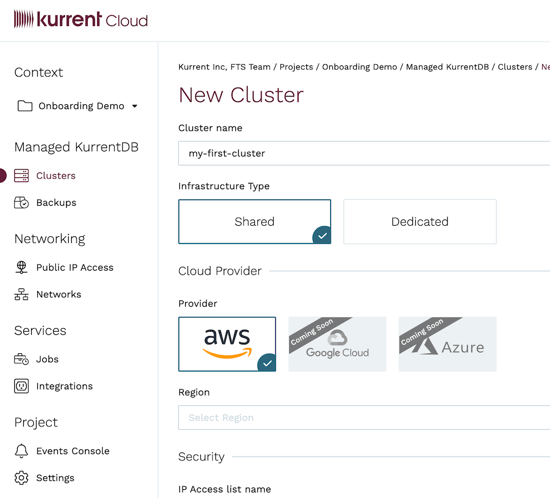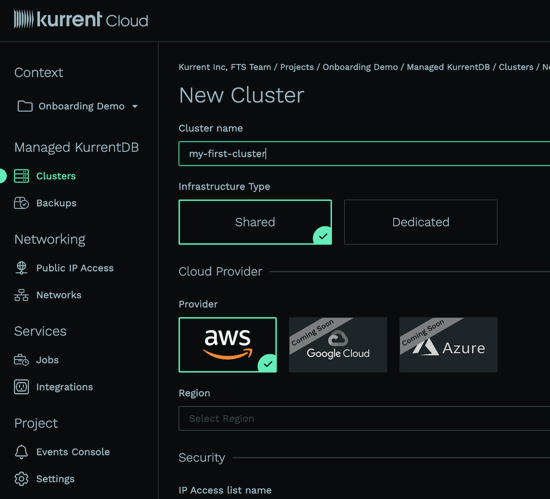Event-Native Database
Model your business processes, not just the state of your business. KurrentDB's event-native data model directly reflects your domain model. Skip the complexity of ORMs, outboxes, and CDC. Gain complete visibility into how your data evolves, and stream events in real time—straight from the source.
Docs
Reference manuals, tutorials, and code samples - all in one place to help you deploy, configure, and run KurrentDB and build applications using supported clients.
DocumentationKurrent Academy
Level up your KurrentDB skills with free courses, covering both application development and database maintenance topics.
Start learningCommunity Forum
Join other developers and Kurrent engineers on our Community Forums and Discord to get advice, learn patterns and best practices, and share your projects and experience.
Join the communitySimple integration
KurrentDB client libraries are available for
Java, .NET, Go, Python, Node.js, and Rust.
Three easy steps
Sign up for Kurrent Cloud
Access Kurrent Cloud in under five minutes.
Create a cluster for free
Provision your first cluster for free using Kurrent's shared infrastucture.
Start hacking!
Use one of our starter tutorials, or build something amazing on your own.


Kurrent works with your favorite stack
.NET
Java
Node.js
Python
Golang
Rust
Kafka
WebHooks
RabbitMQ
ElasticSearch
MongoDB
AWS
GCP
Azure
Used by developers all over the world
50M+
Downloads
10K
Companies using Kurrent
5M
Client Library Downloads
200+
Customers



